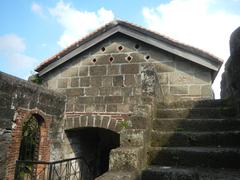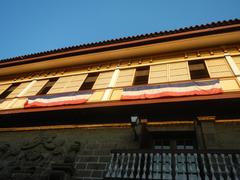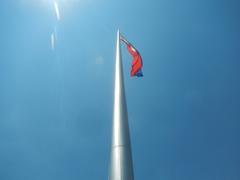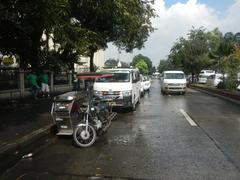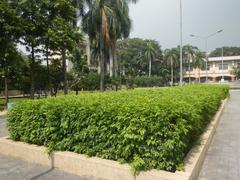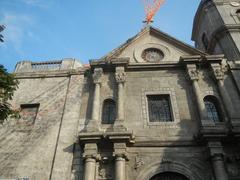People Power Monument Visiting Hours, Tickets, and Historical Sites in Taguig
Date: 24/07/2024
Introduction
The People Power Monument in Quezon City, Philippines, stands as a profound symbol of the nation’s triumphant struggle for democracy and freedom. Erected to commemorate the 1986 People Power Revolution, this iconic landmark marks a pivotal moment in Philippine history when millions of Filipinos united in a peaceful uprising to overthrow the authoritarian regime of Ferdinand Marcos. The monument, designed by renowned Filipino sculptor Eduardo Castrillo, captures the essence of this historic event through its intricate and symbolic artistic elements. Visitors to the People Power Monument can expect an enriching experience, gaining insights into the nation’s past while exploring the site and its surrounding historical landmarks, such as the EDSA Shrine and the Bantayog ng mga Bayani. Whether you are a history enthusiast, a student, or a tourist, this comprehensive guide will provide you with all the essential information you need to make the most of your visit, from travel tips and ticket prices to nearby attractions and photographic spots.
Table of Contents
- Introduction
- History of the People Power Monument
- Visitor Information
- Nearby Attractions
- Conclusion
- FAQ
History of the People Power Monument
Origins and Purpose
The People Power Monument was erected to commemorate the 1986 People Power Revolution, a pivotal event in Philippine history that led to the ousting of then-dictator Ferdinand Marcos. This peaceful uprising, also known as the EDSA Revolution, saw millions of Filipinos from various walks of life gather along Epifanio de los Santos Avenue (EDSA) to demand democratic reforms and the end of authoritarian rule. The monument stands as a testament to the collective courage and unity of the Filipino people during this historic moment.
Design and Construction
The monument was designed by renowned Filipino sculptor Eduardo Castrillo and was completed in 1993. Castrillo is known for his large-scale sculptures and monuments that often depict significant historical events and figures. The People Power Monument is no exception, standing at an impressive 18 meters (59 feet) high. It is located at the corner of EDSA and White Plains Avenue in Barangay Camp Aguinaldo, Quezon City, approximately 0.90 kilometers (0.56 miles) from the EDSA Shrine, another landmark commemorating the revolution.
Symbolism and Artistic Elements
The monument is pyramidal in composition and is set atop an elevated position, symbolizing the rise of the Filipino people against oppression. The first tier of the monument features statues of men and women with linked arms, representing unity and solidarity. One of the figures, identified as Ninoy Aquino, points towards the EDSA Shrine and the Ortigas Area, symbolizing the direction towards freedom and democracy.
The middle tier of the monument depicts various individuals who participated in the revolution, including a musician, a mother carrying an infant, a man making the “Laban” sign, and priests and nuns. These figures represent the diverse sectors of society that came together during the revolution. At the top tier stands a towering female figure with arms raised towards the sky, symbolizing freedom. The figure has unchained shackles on her wrists, further emphasizing the theme of liberation. Behind the composition rises a large flag and staff, symbolizing national pride and unity.
Historical Context
The People Power Revolution was triggered by widespread dissatisfaction with the Marcos regime, which was marked by corruption, human rights abuses, and economic decline. The assassination of opposition leader Benigno “Ninoy” Aquino Jr. in 1983 further galvanized public sentiment against the dictatorship. The revolution reached its climax in February 1986, when millions of Filipinos took to the streets in a peaceful demonstration that ultimately led to Marcos fleeing the country and Corazon “Cory” Aquino, Ninoy’s widow, assuming the presidency.
Continued Relevance
The People Power Monument continues to serve as a gathering point for political and social movements in the Philippines. For instance, in November 2016, the monument became a focal point for protests against the surprise burial of Ferdinand Marcos at the Libingan ng mga Bayani (Hero’s Cemetery). Protesters, including Martial Law victims and political figures, gathered at the monument to denounce the burial, citing the widespread plunder and human rights abuses during the Marcos dictatorship.
In May 2018, the monument was nominated as one of the seven symbols of world peace through the #7Peace #PeoplePower initiative, highlighting its significance not just in Philippine history but also as a symbol of peaceful resistance and democratic ideals worldwide.
Visitor Information
Ticket Prices and Opening Hours
The People Power Monument is accessible to the public without any entrance fee. It is open 24/7, allowing visitors to explore the site at any time of the day or night.
Travel Tips and Accessibility
The monument is located at the corner of EDSA and White Plains Avenue in Quezon City. It is easily accessible via public transportation, including buses, jeepneys, and the MRT (Metro Rail Transit). Visitors should be mindful of heavy traffic in the area, especially during rush hours.
Guided Tours and Special Events
While there are no official guided tours specifically for the People Power Monument, many educational tours and historical walks include it as a stop. The monument also hosts various commemorative events, especially during the anniversary of the People Power Revolution in February.
Photographic Spots
The People Power Monument offers several great spots for photography. The elevated position of the monument provides a dramatic backdrop, and the various tiers of statues offer unique angles and compositions for capturing the spirit of the revolution.
Nearby Attractions
EDSA Shrine
Located approximately 0.90 kilometers (0.56 miles) from the People Power Monument, the EDSA Shrine is another important landmark commemorating the People Power Revolution. It is a place of worship and reflection, with a large statue of the Virgin Mary and several historical markers.
Bantayog ng mga Bayani
The Bantayog ng mga Bayani (Monument of Heroes) is a memorial dedicated to individuals who fought against the Marcos dictatorship. It is located in Quezon City, a short distance from the People Power Monument, and features a wall of remembrance with the names of martyrs and heroes.
Conclusion
The People Power Monument is more than just a physical structure; it is a symbol of the courage, unity, and resilience of the Filipino people. It stands as a testament to the power of peaceful protest and the enduring fight for democracy. Whether you are a history enthusiast, a student, or a casual visitor, the monument offers a profound and moving experience that underscores the importance of remembering and honoring the past. Plan your visit today and explore the rich history and significance of this iconic landmark.
FAQ
Q: What are the visiting hours for the People Power Monument?
A: The People Power Monument is open to the public 24/7.
Q: Is there an entrance fee to visit the People Power Monument?
A: No, there is no entrance fee. The monument is free to visit.
Q: How can I get to the People Power Monument?
A: The monument is easily accessible via public transportation, including buses, jeepneys, and the MRT (Metro Rail Transit).
Q: Are there guided tours available?
A: While there are no official guided tours specifically for the People Power Monument, many educational tours and historical walks include it as a stop.
Q: What other historical sites are nearby?
A: Nearby historical sites include the EDSA Shrine and the Bantayog ng mga Bayani.

